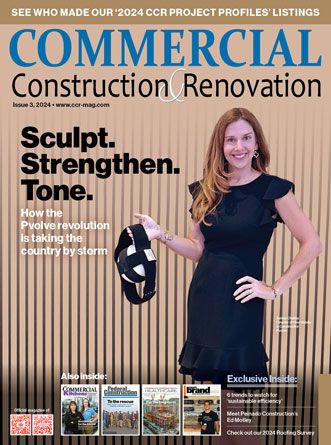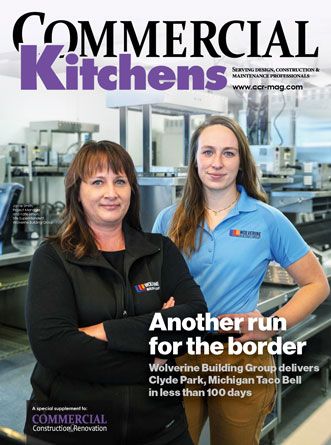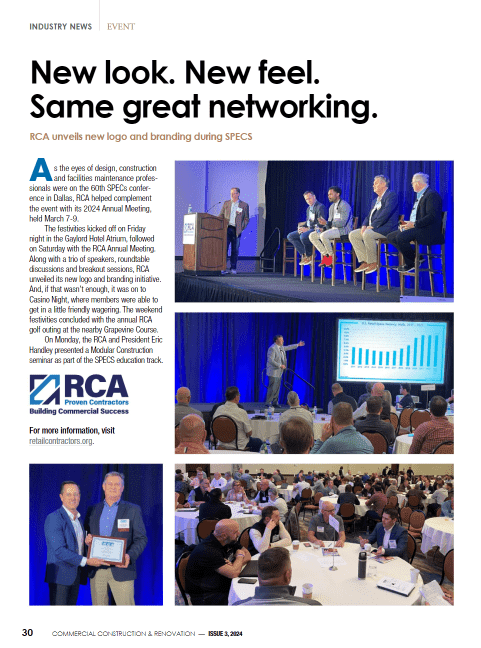



“Armed and Ready”
Understanding trends in commercial roofing industry By Mark Graham
These are good days in the roofing industry. Today, we are experiencing the longest period without a major roof system-related failure mechanism in the history of the industry.
That’s great news in a roofing landscape that continues to be highly competitive. The secret to success is no secret at all. Your roofing projects must be properly designed, constructed from quality materials, and properly installed and maintained.
Because roofing isn’t a commodity item purchase, you must continue to make sound roof purchasing decisions and ask for assistance. The products are not interchangeable, so you have to rely on the vendors you work with. It comes down to building trust.
Some of the biggest issues facing the industry today include roof system performance, changing building/energy code requirements and lightweight structural concrete roof decks.
Let’s take a closer look at that last one. With lightweight structural concrete roof decks, NRCA has received a number of inquiries relating to the application of these structures. The inquiries fall into two general questions: When is a concrete roof deck dry enough to apply a roof covering? And why is a roof system applied over a concrete roof deck showing signs of moisture infiltration when the roof covering isn’t leaking?
The roofing industry historically has used several, rather rudimentary methods for determining concrete roof decks’ dryness and suitability for roof system application.
One method is to apply roofing materials to concrete roof decks only after a minimum of 28 days after concrete is placed. For concrete, 28 days is the standard time for testing and evaluating concrete’s compressive strength.
There is minimal correlation between concrete’s compressive strength and its dryness or suitability to be covered by a roof system.
Another requires mopping or pouring hot bitumen on a concrete’s surface and monitor it for splattering or bubbling caused by excessive moisture in the concrete substrate.
A third method involves taping or otherwise sealing the perimeter of a small, transparent sheet or glass pane to the concrete surface and monitoring it over time for developing condensation. This is standardized as ASTM D4263, “Standard Test Method for Indicating Moisture in Concrete by the Plastic Sheet Method.”
Today, project contract, specification or manufacturers’ installation requirements often attempt to place the responsibility on roofing contractors for determining structural concrete decks’ dryness and suitability to be covered with roofing materials.
The problems reported to NRCA associated with lightweight structural concrete roof decks include:
- Moisture accumulation – Excessive moisture from a concrete deck can be pressure-differential driven into and condensed within a roof system.
- Adhesion loss – The presence of moisture can result in deterioration
of moisture-sensitive roofing materials and adhesive bond loss between adhered material layers.
- Adhesive issues with water-based and low-volatile organic compounds – Excessive moisture can affect adhesive curing and drying rates. Also, moisture can result in adhesive “rewetting,” resulting in bond strength loss.
- Metal and fastener corrosion – Excessive moisture can contribute to and accelerate metal components’ corrosion, including fastener corrosion.
- Insulation R-value loss – The accumulation and presence of moisture in most insulation products will result in reduced thermal performance (lower effective R-value).
- Microbial growth – The presence of prolonged high-moisture contents in contact with organic-based materials, such as wood fiberboard, perlite board and some insulation facer sheets, can support microbial growth.
NRCA considers the decision of when it is appropriate to cover newly placed concrete substrates with roofing materials to be beyond roofing contractors’ control. Because of the numerous variables associated with concrete mix design, placement, curing and drying, roofing contractors are not privy to and may not be knowledgeable of the information necessary to make such a decision.
We recommend the decision of when a newly placed concrete substrate is ready to be covered with a new roof system be made by the building’s structural engineer, general contractor, concrete supplier and concrete placement contractor, each of whom likely will have more knowledge than the roofing contractor about the particular concrete’s curing and moisture release rates. It also may be useful to consult the building’s project or roof system designer and roof system manufacturer.
Furthermore, when it comes to new construction, NRCA recommends designers not specify – and construction managers and general contractors not use – lightweight structural concrete for roof decks or as toppings for roof decks. In NRCA’s opinion, the risks of moisture-related problems associated with lightweight structural concrete roof decks outweigh the possible benefits.
As our industry moves forward, there are several things to remember. Roofing isn’t a commodity item purchase. Warrantees differ – and provide only limited coverage. Always make sound roof purchasing decisions and, as always, ask for assistance.
That’s what we are here for.
BIO
Mark Graham is the VP Technical Services for the National Roofing Contractors Association (NRCA).











 The 2024 virtual Men’s Round Table will be held Q4, 2024, date TBD.
The 2024 virtual Men’s Round Table will be held Q4, 2024, date TBD.











